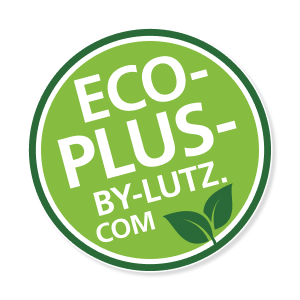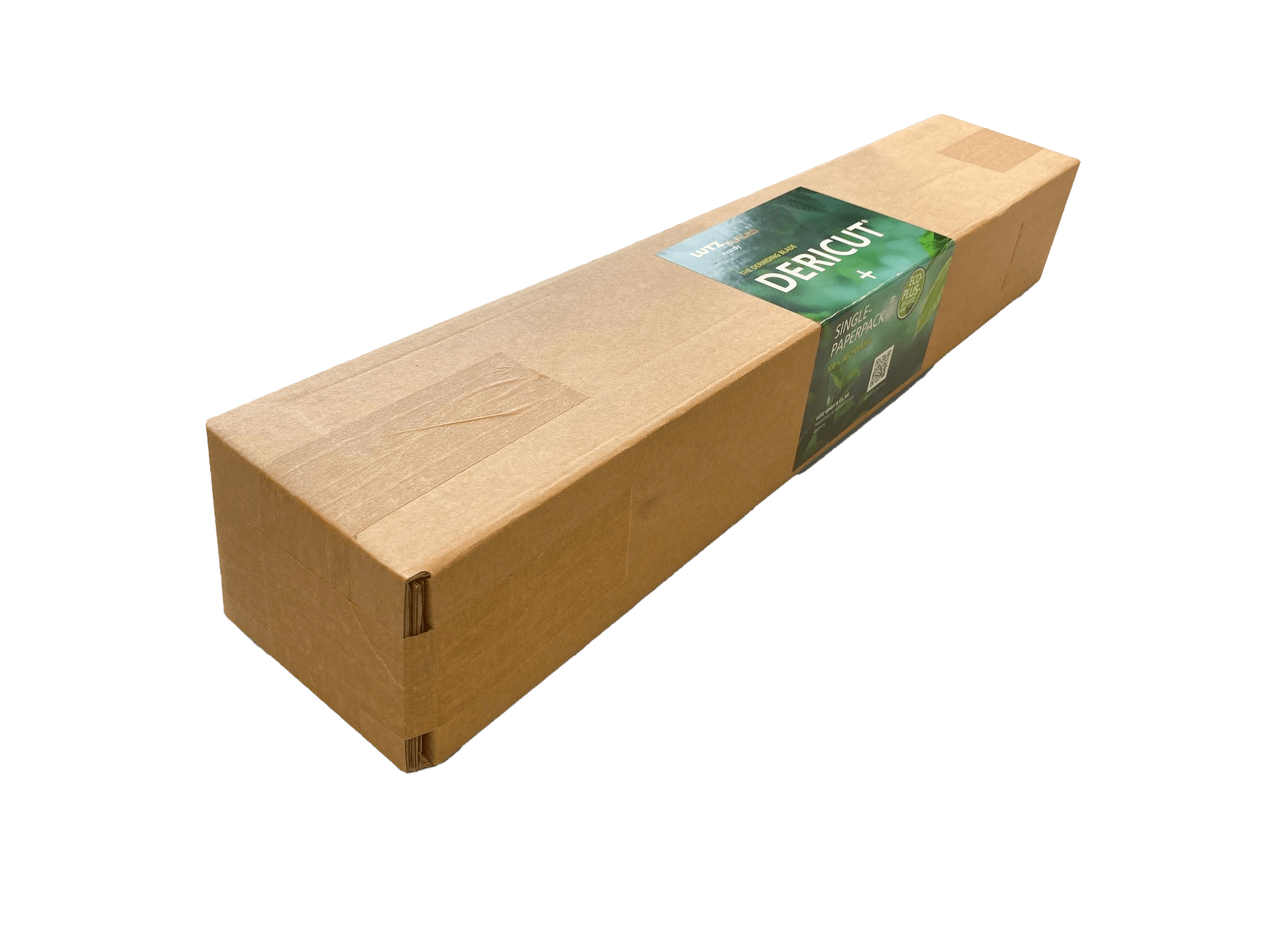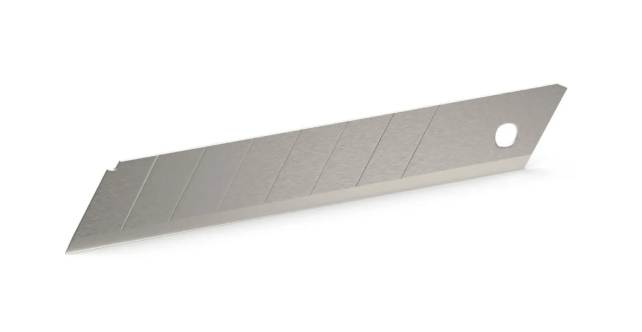
Our strategy: ECO-PLUS for sustainable production
In today’s world, it is essential to take ecological responsibility, which is why at LUTZ BLADES, we are constantly working to improve our environmental impact and avoid negative effects. To achieve this, we have established our own environmental management system, ECO-PLUS, and integrated it into our company processes. With ECO-PLUS, we commit to fulfilling defined environmental goals in the best possible way and implementing continuous measures.
The “Plus” in ECO-PLUS stands for the various areas that concern environmentally conscious action at our company: from sustainability and recycling to the calculation of the product-related CO2 footprint.
ECO-PLUS label
The ECO-PLUS label from LUTZ is a sign of our commitment to sustainability. Accordingly, our packaging also bears this label. This is because packaging marked in this way has always been, due to the sorted separation of recyclable materials:
With the ECO-PLUS label, we aim to offer our customers sustainable and environmentally friendly packaging solutions while fulfilling our responsibility towards the circular economy. LUTZ BLADES strives to make company processes more sustainable and continuously improve environmental impacts.

ECO-Plus modules
At LUTZ, we place great importance on maintaining our ECO-PLUS strategy. Our commitment to this is reflected in our environmental policy, our ambitious goals, and the measures we have taken. Existing and integrated management methods strengthen the structures behind ECO-PLUS and form the framework for defining our numerous ECO-PLUS building blocks.
Reduce waste
Expand recycling
Reduce use of resources
Sustainability at LUTZ
Our ECO-PLUS strategy encompasses all interested parties, including customers, suppliers, employees, society, and all locations. ECO-PLUS covers all company activities, products, and services, including our core processes and their associated environmental impacts. Specifically for our Solingen site, the scope of application applies to the development, design, manufacturing, and distribution of cutting systems, blades, and knives.
With this comprehensive approach, we ensure that our environmental impacts are continuously monitored and improved to make a sustainable contribution to environmental protection. Furthermore, we promote conscious and sustainable action within the company.
Recycling at LUTZ
Sustainability is firmly anchored in our production processes, which is particularly evident in our approach to recycling. We manufacture our packaging, such as the Flip-Box, Lutz-Pack, Pull-Box, or SC-Container, ourselves. Our packaging is 100% recyclable. In our production processes, we also use recycled materials, for example in injection molding, to minimize environmental impacts and conserve valuable resources. Up to 38% recycled content is used in the production of our plastic packaging.
Through our consistent recycling of packaging material, we not only contribute to waste reduction but also promote the circular economy. Our packaging is designed to be reused multiple times and easily recycled at the end of its lifecycle. In doing so, we make an important contribution to sustainability and strengthen our responsibility towards the environment.
Calculating the CO2 Footprint
There are various methods to illustrate the environmental impact of products. One of them is the calculation of the product-related CO2 footprint, also known as Product Carbon Footprint (PCF). The PCF of a product describes the total CO2 emissions that occur during the product lifecycle and consists of Scope 1, 2, and 3.
Scope 1: Direct Emissions
Emissions from owned or controlled sources, e.g., the combustion of fossil fuels in company-owned facilities (boilers, furnaces).
Scope 2: Indirect Emissions from Energy Consumption
Emissions from purchased energy, e.g., those arising from the generation of purchased electricity.
Scope 3: Indirect Value Chain Emissions
Upstream and downstream emissions not directly controlled by the company, e.g., raw material procurement or supplier activities.
PCF shows emissions:
Example: Snap-off blade from LUTZ BLADES
By calculating the PCF, it is possible to classify products and their associated emissions, making them comparable.
Example Calculation: The Snap-off Blade 2011 from LUTZ BLADES
The Snap-off Blade 2011 from LUTZ BLADES is made of stainless steel or carbon steel. It is used for cutting carpets and foils, as well as stripping cables, and is equipped with snap-off segments
.
The calculation was based on 150 carbon steel blades. With a length of 100.00 mm, a width of 17.70 mm, and a thickness of 0.5 mm, they have a material weight of 1 kg.
For the PCF calculation, the emissions from Scope 1 and 2, as well as the proportional emissions from Scope 3, where known, were used.
The mass-weighted average PCF for this blade is 4.62 per kilogram.


